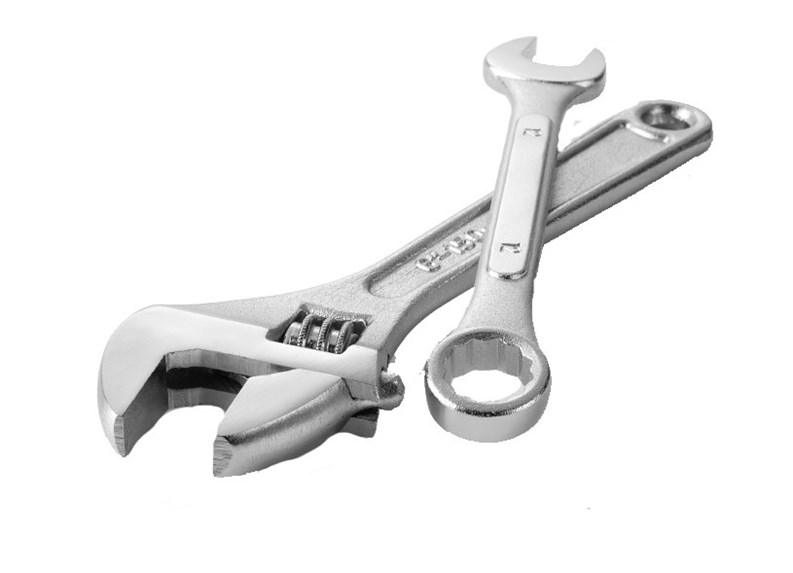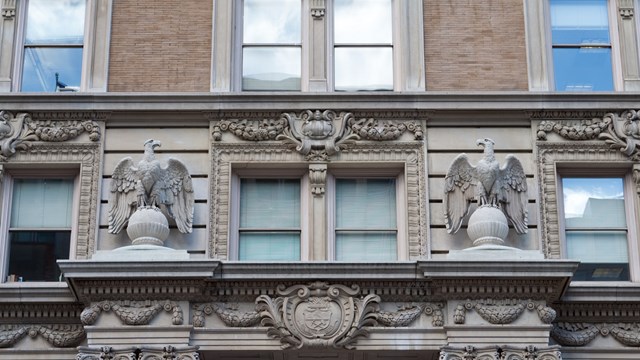Quiz most New York City apartment-dwellers on what the primary force keeping undesirable elements out of their apartment is, and chances are they'll say, "the doorman," or their elderly neighbor who keeps a hawk's eye on the street, or maybe they'll briefly flash to a time when their cat took command of some pesky rodent. Few will think to name their windows as the first line of defense against the uninvited entry of dirt, drafts and noise into their home.
Windows are often neglected in New York City apartment buildings. Why? They are transparent - composed mainly of glass - but they aren't fragile. Even when they're not properly maintained, they have the potential to last a hundred years. Precisely for these reasons, people are not commonly inclined to invest in any preventive window maintenance. It's only when they stop functioning properly that a window is addressed as an entity, "And often, by that time, it's more of a replacement situation," says David Skudin, vice president of CitiQuiet Windows on Long Island. "They are beyond repair."
The further gone a window is, the greater the disturbance caused by replacing it. In the most extreme scenario, when the whole frame has rotted and needs to be taken out of the masonry, the moldings inside the apartment will inevitably be altered or damaged, as will the plaster and paint around the interior perimeter of the window. Skudin says that it's difficult to sum up the values of a window sight-unseen, but he estimates that a "good quality replacement window" will price between $500 and $600. This doesn't include the cost of fixing the window interior, or of the labor time spent carting debris out of the apartment.
Bruce Woolf says that the Hotel Olcott on 72nd Street was about 15 years overdue in calling his company, Apple Architectural Windows, which specializes in historic window replacements. Woolf's crew was contracted to replace the 80 wood-frame windows lining the first three floors of the hotel.
"Had they been properly maintained, the windows might either have been saved, or would not require an entire frame replacement," says Woolf. He explains that if you get to a window in time, you can do a replacement by just installing new sashes (a sash is the part of the window that slides up and down) in an existing frame. "But in this case, the entire window frame had to be removed, and that necessitates a lot of interior repair as well."
The price tag on this neglect? Woolf estimates that the Olcott could have saved about $50,000 had they contracted the work in time.
When you ask people what type of windows they have, they are more likely to respond "Microsoft 2000" rather than "double hung" or "sliding," - two major players in the material window world. Most of us don't know much about our windows - how much they cost; what proper maintenance entails; which window styles are most efficient - and in the absence of such knowledge, we tend to look right through them.
It's fairly easy to figure out when your windows are shot, as the telltale signs are unambiguous; like a cold draft, dirt or dust on the windowsill, or rattles and creaks when you pull the sash up or down. But the indications that a window is in need of preventive care are less obvious, and it's therefore best to take such action according to a timetable.
Woolf advises people to clean out the tracks of a window - or the chain and pulley, depending on its style - once every six months. Every five years, he says, you should make sure that the exterior is caulked, the glass is properly puttied, and the window has a good coat of paint on it.
In addition, John Zoetjes, who owns New Jersey Window Erectors in Sparta, New Jersey, recommends inspecting the weather-stripping on an annual basis and repairing or replacing it if necessary. "You're looking for cracks, rot, or spaces in the weather-stripping that would allow air or water to come through," he says.
You could call a window company to come in and provide this care, though few are called on to do so, most likely, as Woolf says, "because people don't know to do it." Even if they did, the expense is likely to sound suspect, like something window contractors might promote to pad their own wallets, despite the fact that they often make their bread-and-butter living off the standard ignorance of preventive care.
There are some basic credentials that you check for before hiring a contractor to work on your windows. Every contractor must have liability and worker's compensation insurance. A contractor hired by an individual, as opposed to a management company or co-op board, must be licensed by the New York City Department of Consumer Affairs. In older buildings that have lead in the windows, contractors must also be certified in interim lead-safe work practices.
"You should find a reputable window contractor who has been referred, and check out examples of the work that the contractor has done," says Skudin, noting that neighbors and supers are good sources of this information.
When sorting through these referrals, consider the following questions. Has the contractor previously worked in your building, or in a similar building, and therefore become proficient in negotiating its management issues, like overburdened freight elevators? Do they have a specialty in installing the type of windows that you need? Does the company use a subcontractor? What will the job cost? This latter question, of course, will rarely have the same answer twice.
"I recommend getting a second or third quote," says Zoetjes. "And always be sure that each quote spells out, item-for-item, exactly what you're getting." This list should include the type of window, the material used, the specific rating for the window (e.g. commercial or non-commercial), and the thickness of the insulating glass.
For larger window projects, Zoetjes also recommends asking for a sample window to be installed. "It will demonstrate the installation method and the overall quality of the window for that particular project," he says. "This window in essence becomes the standard for every other window that needs to be installed in the property."
For residents in a historic district, the Landmarks Preservation Commission has specific rules governing window replacements and repair, regardless of whether the building is a landmark in its own right.
"If a historic building has less than 40 feet of frontage and is less than six stories tall, the windows must be replaced to match the historic style, operatic configuration and material," says Woolf. "In a typical apartment house, all the same rules apply, except for the material. A wood window can be replaced with an aluminum window as long as it meets other criteria."
While the commission does not require permits for the ordinary maintenance of these windows (this list includes weather stripping, caulking, puttying, and replacing broken glass), it does require them for more involved work. A list of examples of permit-required work is listed on the commission's Web site (http://www.nyc.gov/ landmarks). This list includes any work that might alter the window sash, framing or surrounding architectural detail.
The commission recommends repairing and preserving historic windows, rather than replacing them, whenever possible. In order to apply for a permit, you need to supply the commission with photos of the windows, drawings of the proposed and existing windows, a floor plan indicating the number and location of the proposed windows, a color sample, and a statement detailing the condition of the windows.
According to Woolf, it typically takes between two and four weeks to secure a permit for a "fairly straightforward job," in a historic property zone. He warns that this process can take longer, however, if you are hoping to replace the window with something less than an exact replica.
Interior windows, which can achieve the same acoustical and thermal effects as a replacement window, present an alternative that is particularly relevant to historic properties.
"The beauty of the interior window is that it's completely allowed by landmark guidelines without any approval," says Skudin. "They don't change the appearance at all from the street, and because they only require two inches on the inside of the window, they're very low profile."
According to Skudin, interior windows are generally more expensive than replacement windows, but are less labor intensive, so they can end up costing less.
As in all cases when you are contracting work in your apartment or your building, separating sales pitch from sound advice is one of the most fundamental parts of the process. "There are many options available, but you have to be careful, because there is always a point of diminishing returns," says Richard Apfel, vice president of Skyline Windows in Manhattan.
He points out that if someone puts in new windows with insulated glass, they will notice such an enormous difference that, given the expense, it would be unnecessary to use laminated glass, which is used in car windshields and can reduce additional noise. "You can overdo anything," Apfel says. "There are many options available with glass, but they always come with a trade-off."
The most obvious trade-off is, of course, money, but there are others as well. If you make glass more resistant to sun, the window will become more reflective and at night you won't be able to see out. Offices might use this kind of glass, but it is not desirable for residential use.
Some new products gain mainstream popularity as a result of being widely misunderstood. So-called "Low-E" glass, which is an expensive option, is a prominent example. While it is commonly thought to control "solar load," or sun, it actually just increases the thermal effectiveness of the window and makes it more efficient than the walls are at trapping heat in the winter. When people install Low-E glass in their individual units, its advantages are often lost.
"In the real world, most apartments are overheated," says Apfel. "If it's a building-wide replacement, you might want to look at installing Low-E glass throughout, but you need to be able to control your heating and cooling systems."
Zoetjes concurs that it is important to be wise in considering which new products on the market are worth the investment. "Argon gas is now being touted as the new buzzword in the window industry, and it's something I don't feel has had enough of a proven track record to be considered as a long-term high-performance product," he says.
Argon gas is put between the two panels of glass to act as an insulating barrier. Zoetjes says that the gas can leak out of the window, undetected, so you can't tell if it's still there, providing the desired benefits. Argon gas is analogous to the windowpane itself. Because it is invisible, it takes some failing on its part to signify a need for improvement.
"Something you have paid substantially for may not even be there years down the road," Zoetjes says.







Leave a Comment